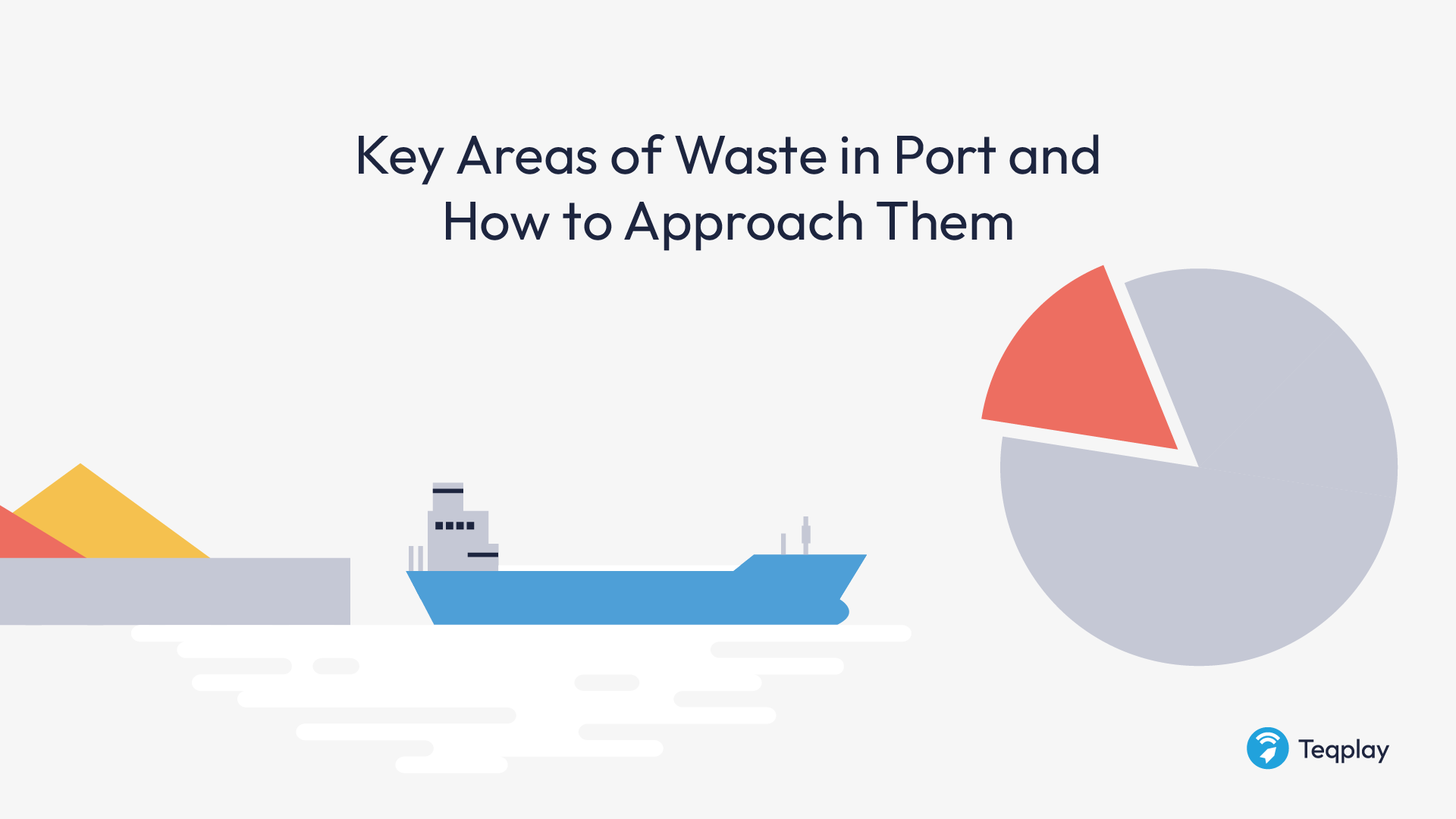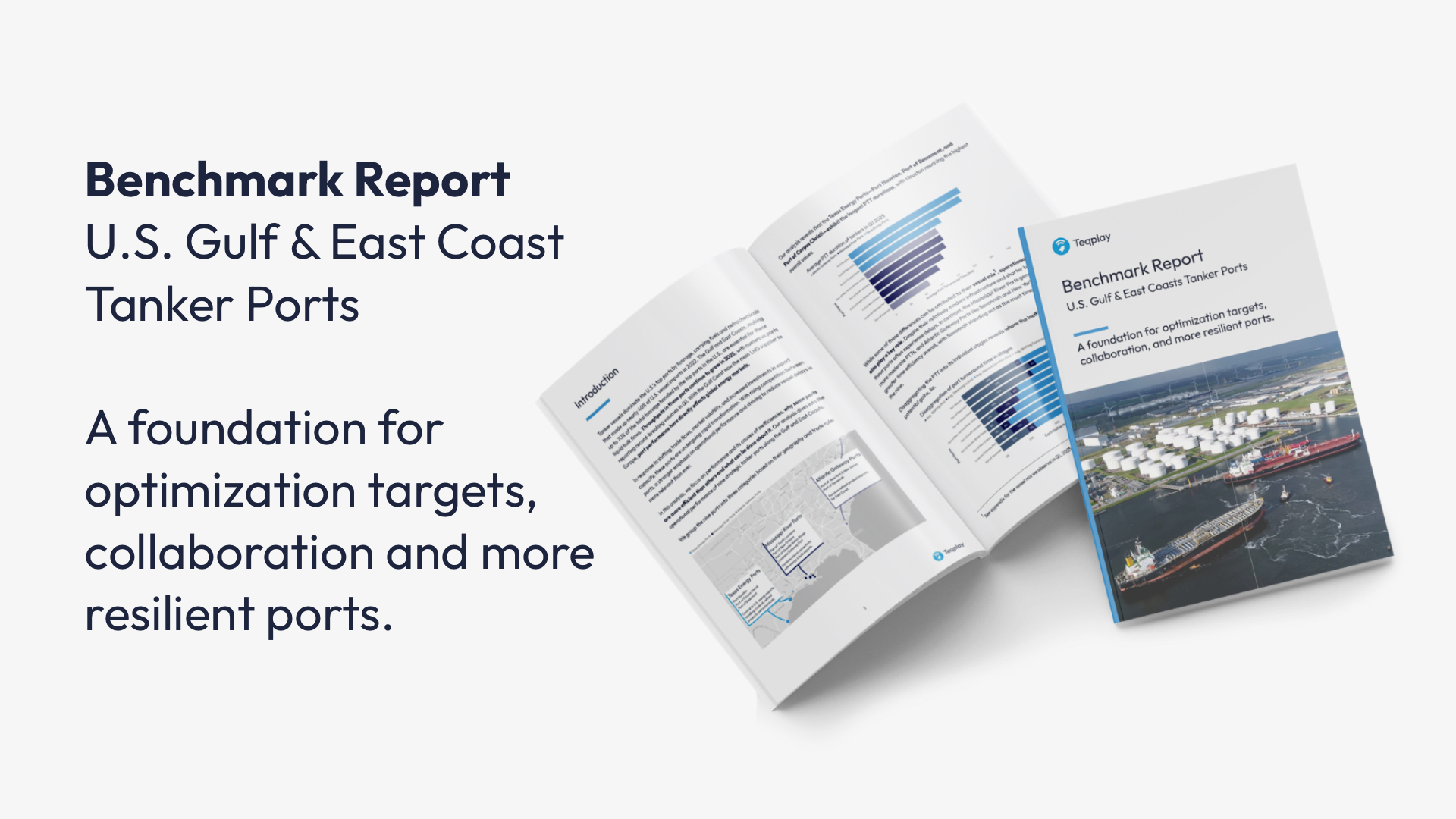Key areas of waste in port
There are two key areas of waste that occur within the port, and for too long they have not been exposed or understood. These two areas are port time and port costs.
Issues with port costs
The shipping industry relies heavily on port agents to facilitate port services and manage financial transactions through disbursement accounts (DAs). Port agents typically charge an agency fee for their services, encompassing service procurement, logistics, and documentation handling. It is not uncommon for port agents to agree upon a rate with service providers that is lower than the amount invoiced to the customer, resulting in “hidden costs.” Hidden revenue streams may also emerge through foreign exchange transactions.
The implications stemming from the issues within port procurement are far-reaching and multifaceted. First and foremost, these issues can lead to significantly higher costs, reduced profit margins, and cash flow challenges for companies. Services coordinated in an environment marked by conflicting interests may undermine efficiency and cooperation. Furthermore, there is an increased risk of compliance failures. Imperfect agency agreements compound these issues, making it essential for the industry to adopt a more transparent and accountable approach.
Issues with port time
Another series of critical issues plaguing the maritime industry revolves around the handling of data, particularly in the context of port operations. Statements of facts (SoF) are still manually recorded, lacking standardization, and inadequately digitized, making them susceptible to manipulation and inaccuracies.
A pressing problem is the lack of awareness of opportunity costs associated with port turnaround times (PTT). The unpredictability surrounding PTT and, consequently, Estimated Time of Departure (ETD) poses a significant operational hurdle. What’s more, the substantial cost of time spent in port is often accepted as an inherent expense of doing business, even though it represents a significant financial burden in vessel utilization, terminal utilization, freight and demurrage
The industry’s understanding of port and berth incidents, as well as idle times, remains incomplete, leaving room for a lot of improvements in terms of efficiency. The overreliance on manual data entry further compounds these issues, emphasizing the urgent need for digitalization and standardized practices in maritime data management.
The inefficiency stemming from these issues leads to increased idle time versus productive time in port operations. Without reliable sources of information, there are risks when selecting ports and terminals, potentially leading to suboptimal choices. The lack of transparency surrounding port and vendor performance exacerbates these challenges, making informed decision-making difficult. This situation can result in increased demurrage costs, negatively impacting the Carbon Intensity Indicator (CII) rating, and leading to misallocation of time and costs.
How to approach waste and risk
With a good idea of the cargo movement process and port operations as well as the issues surrounding them, it is time to step up and approach the problem systematically, not only identifying them but also resolving and eliminating any potential and hidden waste.
Expose waste
The first step to improvement is understanding. This starts with a thorough examination of your processes and operations. Teqplay can leverage our subject matter expertise together with a data-driven methodology to uncover hidden time, unproductive periods, excessive costs, and emissions impact within your port operations. More importantly, we quantify the financial and contractual implications of this waste.
This initial stage provides you with a clear and comprehensive understanding of the impact of operational inefficiencies, serving as the foundation for all subsequent actions. By shining a light on these areas, you gain valuable insights to drive meaningful change.
Address waste
Once waste is exposed, the next critical step is to address it effectively. Teqplay delves deep into your organization, meticulously scrutinizing the intricacies of your operational processes and charter party terms to pinpoint waste areas. Our team of analysts and maritime experts collaborates closely with your team, conducting a comprehensive review of processes, policies, and practices.
Through this collaborative effort, we identify the root causes of waste, helping you prioritize your efforts. This ensures that your team can continue their day-to-day operations while focusing on actions that deliver the maximum benefits. Our goal is to guide you toward informed decisions and targeted solutions.
Eliminate waste
The final phase, the ‘Implementation Phase,’ is where the elimination of waste transitions from theory to practice. Teqplay assists you in implementing sustainable solutions that align with the insights gained during the previous stages. This may involve organizational changes, the deployment of advanced technological solutions, and the establishment of continuous improvement feedback loops.
Key Performance Indicators (KPIs) will be set up to monitor progress, tailored to the specific type of waste being addressed. With Teqplay, you’re not just implementing a solution; you’re fostering a culture of continuous improvement, sustainability, and operational efficiency. Our holistic approach ensures that waste is not only uncovered and understood but also effectively undone.
Ready to start exposing & eliminating waste and risk in port?

Léon Gommans | CEO/Co Founder of Teqplay
A serial entrepreneur who’s passionate about #innovation, #technology, #collaboration, and of course, #maritime. The mission is: to connect the dots & to get it to work, together with the industry!
- +31 (0)6 55306660
- leon@teqplay.com
- Léon Gommans
Frequently Asked Questions (FAQ)
Waste in port time & port costs are areas that can be frequently encountered, but not often exposed or understood. From "hidden costs" in agency fees, to conflict of interests undermining efficiency. With port time, the issues revolve around the handling of data, as well as a lack of awareness of opportunity costs associated with port turnaround time.
The first step to improvement is understanding. With a thorough examination of your processes by maritime experts with data-driven methodology, you can get a clear view of the issues. Once waste is exposed, we can identify its roots cause and pinpoint waste areas. The final phase involved implementation of sustainable solutions and set up KPIs that align with insights we have gathered, ultimately eliminating waste & risk in your port turnaround time.




